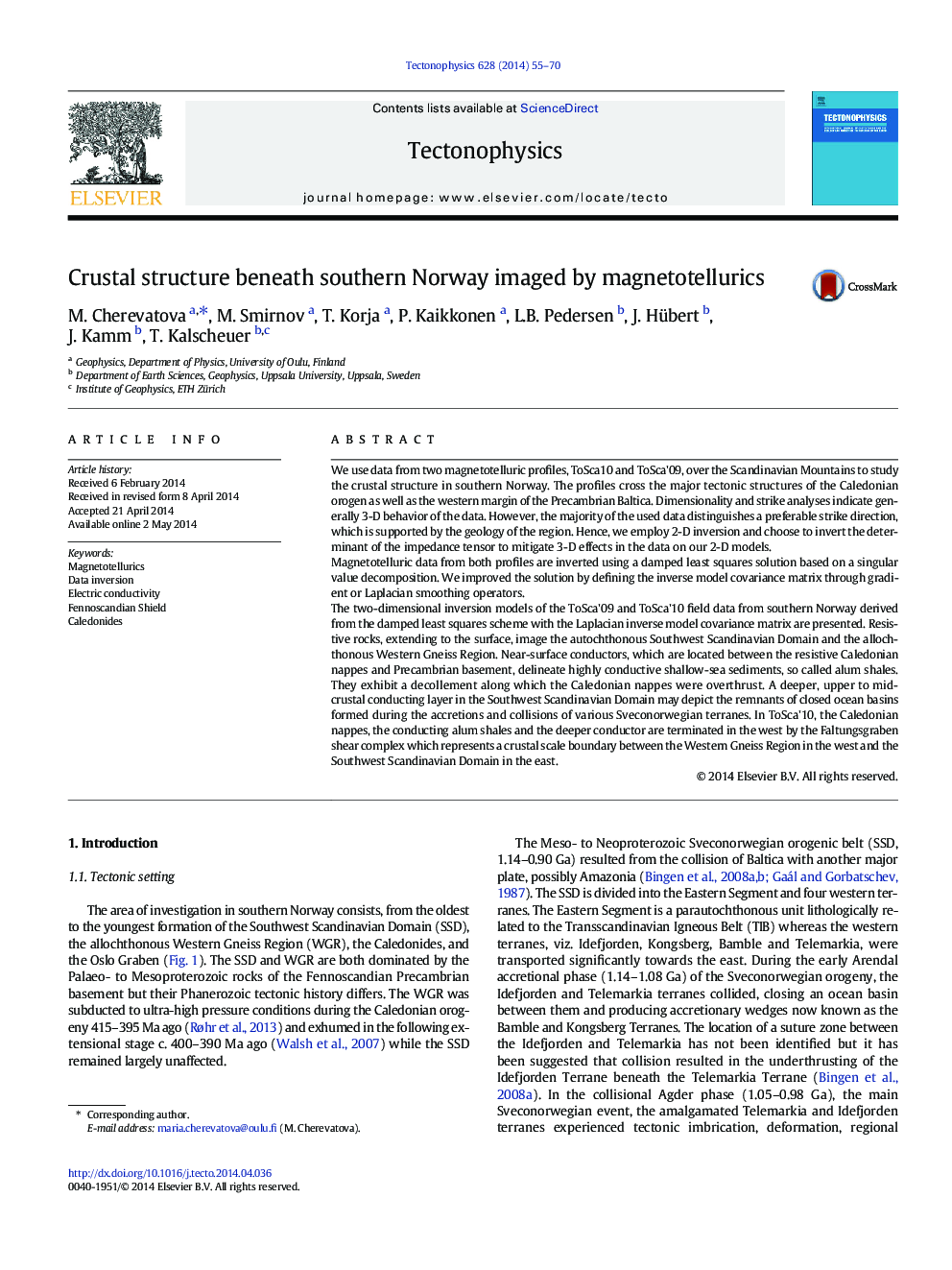| کد مقاله | کد نشریه | سال انتشار | مقاله انگلیسی | نسخه تمام متن |
|---|---|---|---|---|
| 4691930 | 1636763 | 2014 | 16 صفحه PDF | دانلود رایگان |

• First electrical conductivity models of southern Norway from magnetotelluric survey
• 2-D inversion with damped least squares improved considering smoothness constraints
• Several crustal conductors revealed in the generally resistive Precambrian basement
• Highly conductive shallow-sea sediments observed on the Caledonian nappes boundary
We use data from two magnetotelluric profiles, ToSca10 and ToSca'09, over the Scandinavian Mountains to study the crustal structure in southern Norway. The profiles cross the major tectonic structures of the Caledonian orogen as well as the western margin of the Precambrian Baltica. Dimensionality and strike analyses indicate generally 3-D behavior of the data. However, the majority of the used data distinguishes a preferable strike direction, which is supported by the geology of the region. Hence, we employ 2-D inversion and choose to invert the determinant of the impedance tensor to mitigate 3-D effects in the data on our 2-D models.Magnetotelluric data from both profiles are inverted using a damped least squares solution based on a singular value decomposition. We improved the solution by defining the inverse model covariance matrix through gradient or Laplacian smoothing operators.The two-dimensional inversion models of the ToSca'09 and ToSca'10 field data from southern Norway derived from the damped least squares scheme with the Laplacian inverse model covariance matrix are presented. Resistive rocks, extending to the surface, image the autochthonous Southwest Scandinavian Domain and the allochthonous Western Gneiss Region. Near-surface conductors, which are located between the resistive Caledonian nappes and Precambrian basement, delineate highly conductive shallow-sea sediments, so called alum shales. They exhibit a decollement along which the Caledonian nappes were overthrust. A deeper, upper to mid-crustal conducting layer in the Southwest Scandinavian Domain may depict the remnants of closed ocean basins formed during the accretions and collisions of various Sveconorwegian terranes. In ToSca'10, the Caledonian nappes, the conducting alum shales and the deeper conductor are terminated in the west by the Faltungsgraben shear complex which represents a crustal scale boundary between the Western Gneiss Region in the west and the Southwest Scandinavian Domain in the east.
Journal: Tectonophysics - Volume 628, 30 July 2014, Pages 55–70